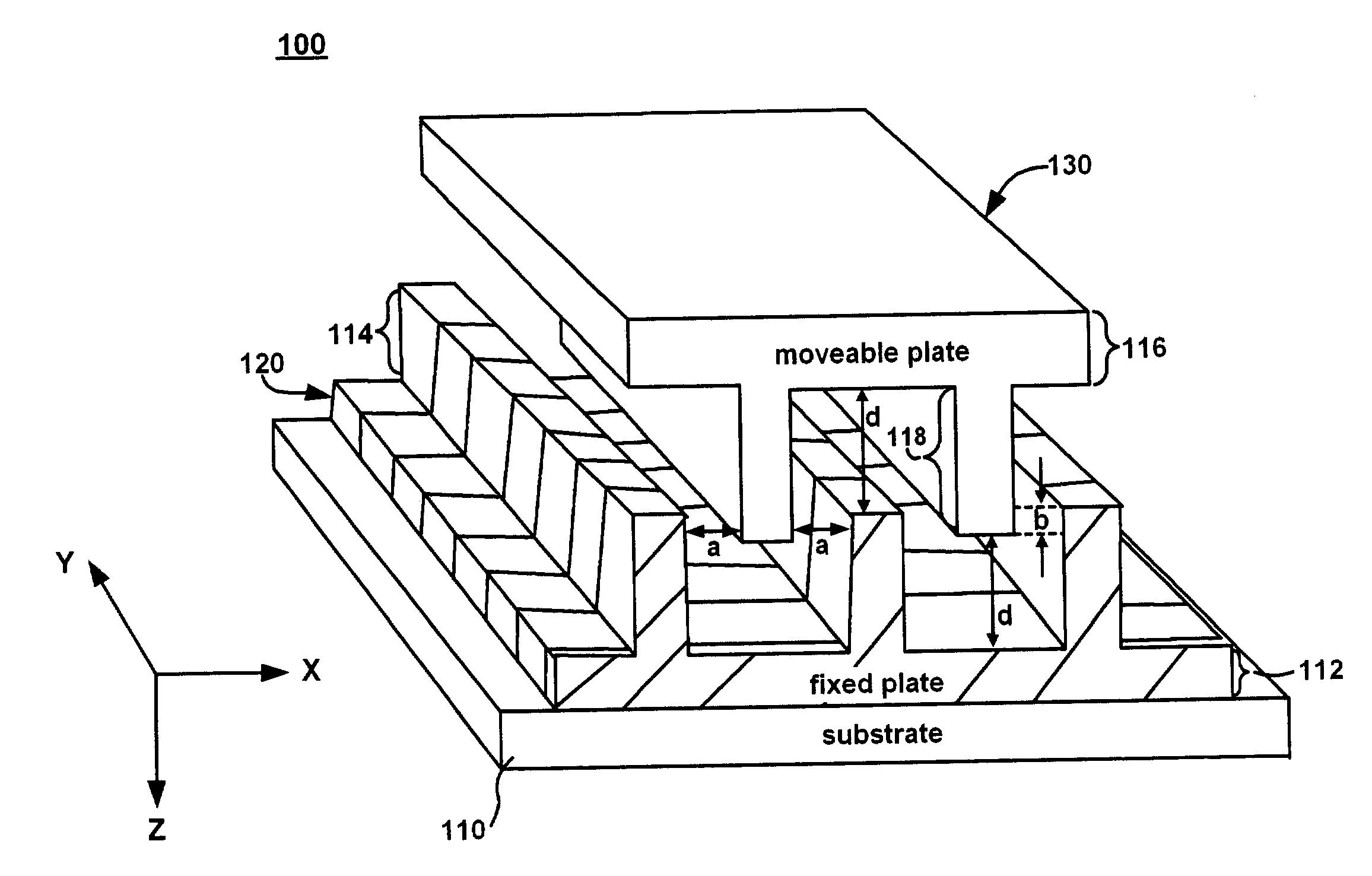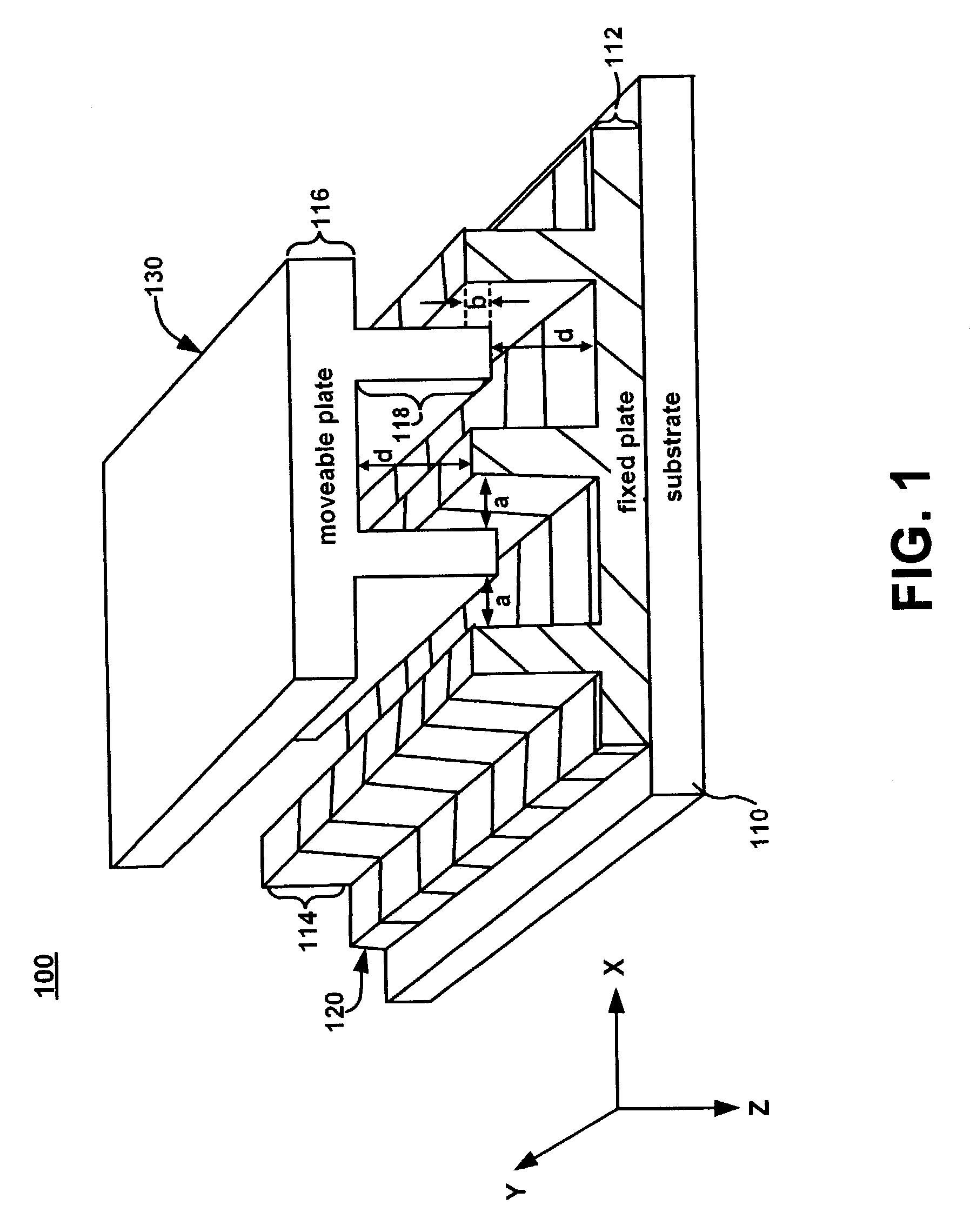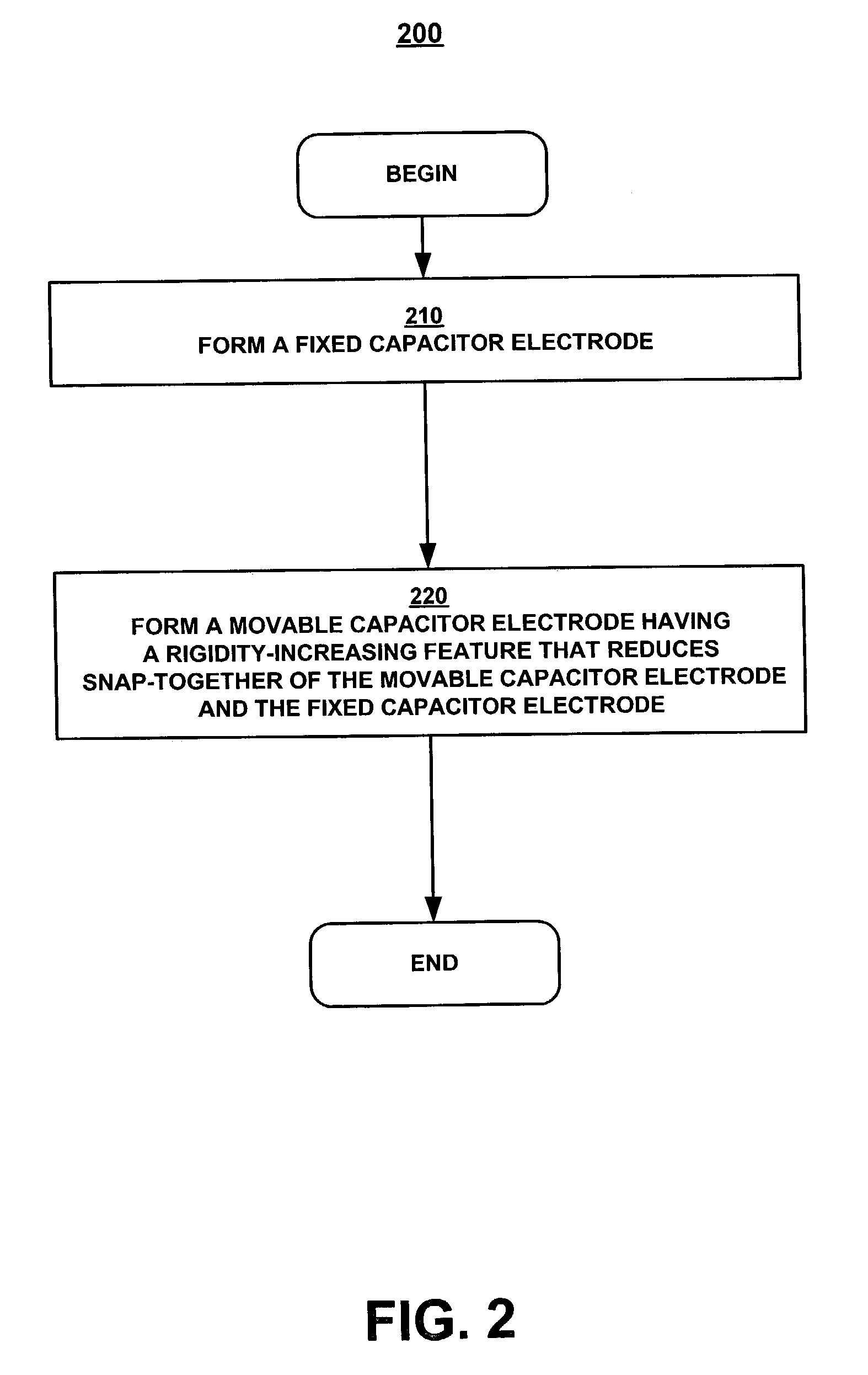Variable capacitor having a rigidity-increasing feature
a capacitor and variable technology, applied in the field of variable capacitors, can solve the problems of deformation of the movable capacitor electrode, deformation non-uniform distance between the two capacitor electrodes, so as to reduce the snap-together of the capacitor electrode, increase the tuning range of the capacitor, and reduce the snap-together effect of the capacitor electrod
- Summary
- Abstract
- Description
- Claims
- Application Information
AI Technical Summary
Benefits of technology
Problems solved by technology
Method used
Image
Examples
Embodiment Construction
[0015]FIG. 1 illustrates a portion of an exemplary variable capacitor 100 in accordance with a first embodiment of the present invention. The movable capacitor electrode 130 of the exemplary variable capacitor 100 has rigidity-increasing features that increase the resistance of the movable capacitor electrode 130 to bending. The more rigid movable capacitor electrode 130 will not bend as easily as a conventional flat-plate capacitor when subjected to stresses such as those encountered during fabrication. The more rigid movable capacitor electrode 130 will not bend as easily as a conventional flat-plate capacitor during use.
[0016]The rigidity-increasing features of the movable capacitor electrode 130 also provide a capacitance-increasing topography. Furthermore, the fixed capacitor electrode 120 includes capacitance-increasing features. Thus, the major surfaces of the capacitor electrodes 120, 130 of the variable capacitor 100 have a capacitance-increasing topography. For the purpose...
PUM
 Login to View More
Login to View More Abstract
Description
Claims
Application Information
 Login to View More
Login to View More - R&D
- Intellectual Property
- Life Sciences
- Materials
- Tech Scout
- Unparalleled Data Quality
- Higher Quality Content
- 60% Fewer Hallucinations
Browse by: Latest US Patents, China's latest patents, Technical Efficacy Thesaurus, Application Domain, Technology Topic, Popular Technical Reports.
© 2025 PatSnap. All rights reserved.Legal|Privacy policy|Modern Slavery Act Transparency Statement|Sitemap|About US| Contact US: help@patsnap.com



